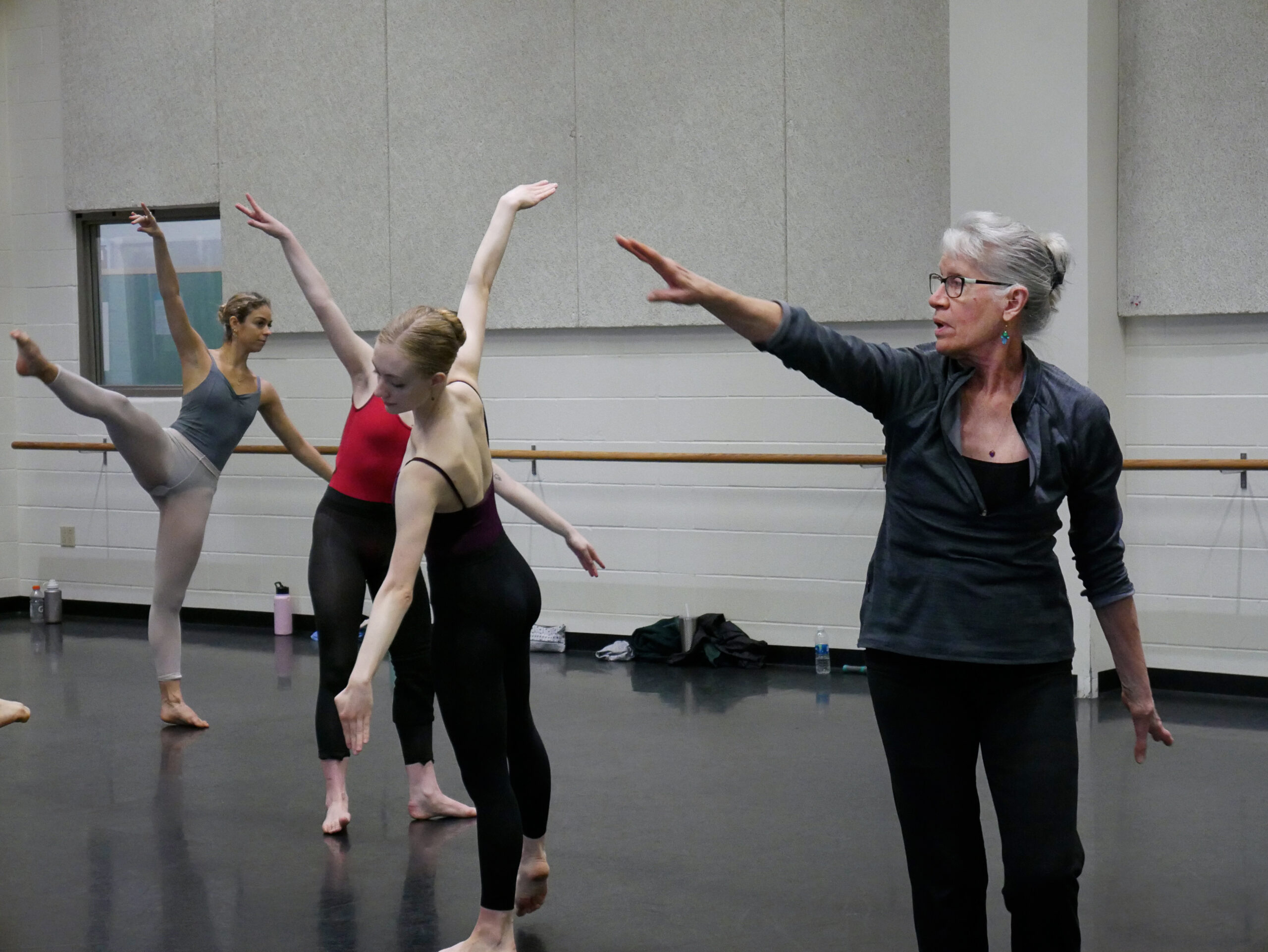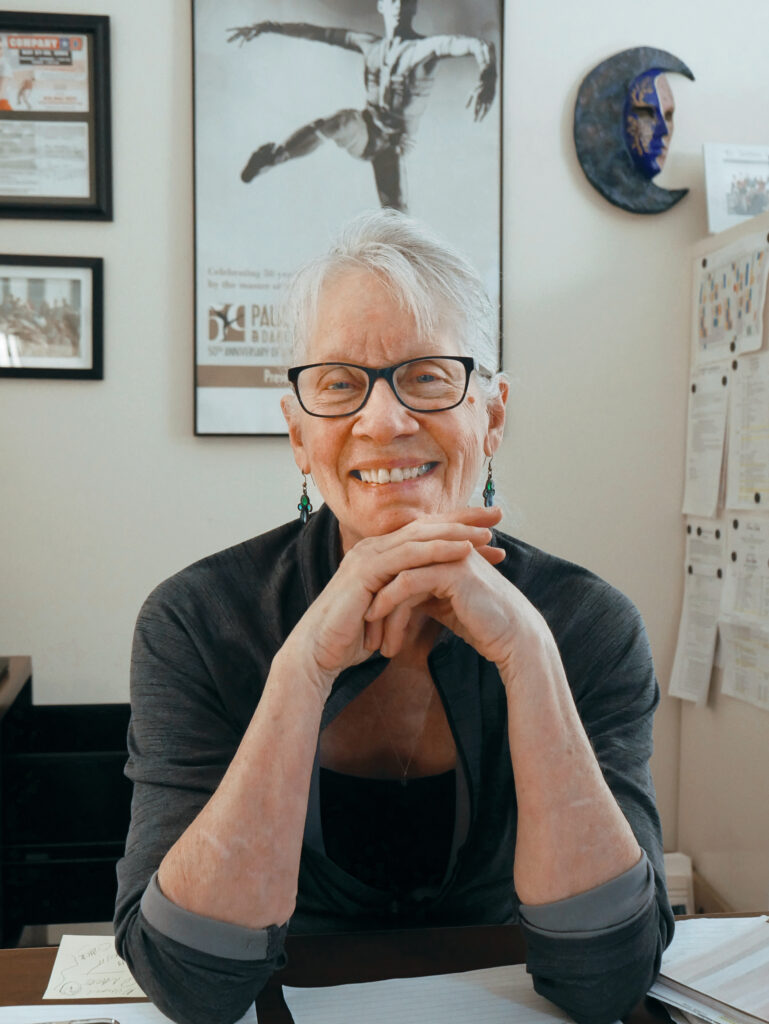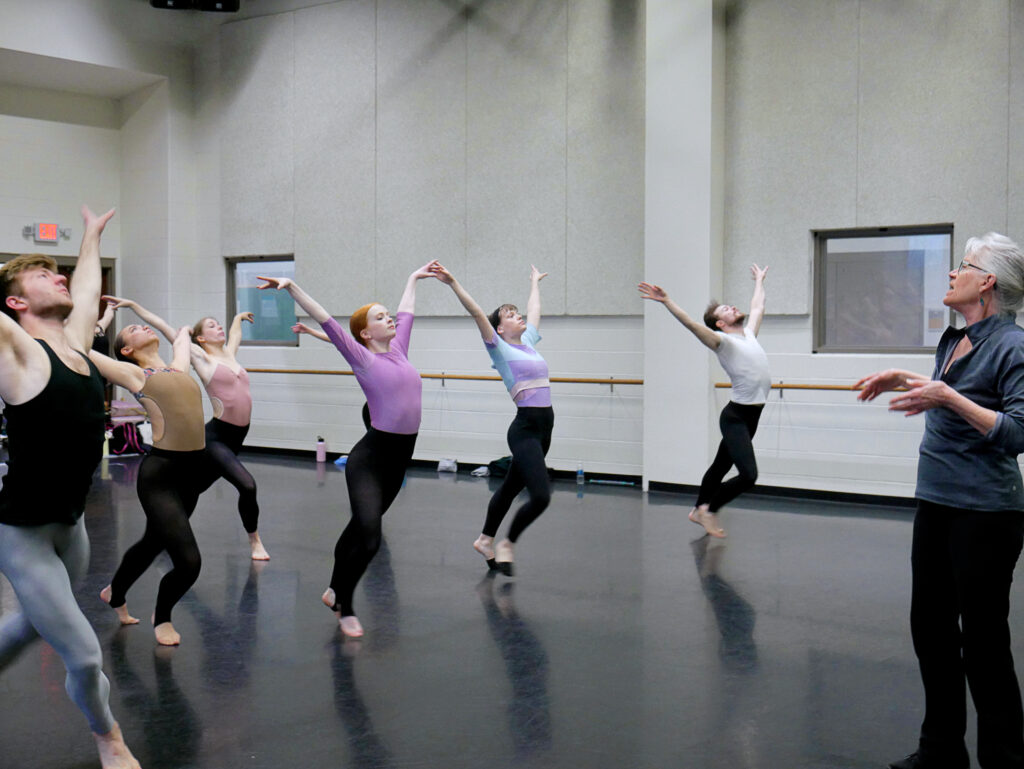
“Ballet was my first language; it was my first love,” recalls Butler University dance professor Susan McGuire. But after being moved by a performance of Diversion of Angels by the Martha Graham Dance Company, McGuire pivoted to a career in modern dance, eventually joining the esteemed institution as a soloist in 1973. She went on to become a principal with the Paul Taylor Dance Company from 1977 until her retirement in 1988, when she transitioned to teaching full-time. McGuire has served on the faculties of New York University’s Tisch School of the Arts, the Martha Graham School of Contemporary Dance, the Paul Taylor School, The School at Jacob’s Pillow, American Dance Festival, and The Juilliard School’s summer program. For the past 19 years, McGuire has been on faculty at Butler, where she’s taught courses including choreography and music, modern technique, improvisation, and modern teaching analysis.
Dance Teacher spoke with McGuire to learn more about the modern masters that influenced her teaching style; what it’s like bringing that expertise to a ballet-focused dance program; and remaining open to how the industry is evolving.
What do you like most about teaching at Butler University?
Butler has a ballet emphasis and so the dancers come in, for the most part, really well-trained and I don’t have to start at ground zero. They also get modern and jazz techniques on a regular basis, so they become really well-rounded. Training these dancers sort of mimics my own experience. I have a deep understanding of ballet technique, and [teaching these students] is a way for me to tap back into my roots and help them develop versatility.

What is the biggest challenge you experience working at Butler, and how do you work through it?
It doesn’t have to do with what goes on in the studio so much as the fact that Butler is in Indianapolis, so there’s not much [dance-wise] that comes through. We call it the “Butler bubble.” So my challenge is to encourage the dancers to get out of the city; go to Chicago, which is about a three-hour drive away, to see dance performances or do an intensive that challenges them differently and gets them out of the city. You need to be out and about in the dance world as soon as you possibly can and have different experiences.
What’s the best advice you’ve been given as a dance educator?
Preparedness for sure; making sure that when you go in the studio you absolutely know what you are about to present to the students. Even if you don’t feel incredibly confident, you need to project it, which can be tough as a young teacher. Then, as you become a more experienced teacher, finding the balance between nurturing the student and holding fast to your standards.
Who has been your biggest role model in the dance education field?
I spent some time in London as artistic director of London Contemporary Dance School from 1991 to 1998, and the teachers there were absolutely phenomenal. The way in which they structured their classes, particularly the Merce Cunningham teachers, was impeccable. The Cunningham classes were so well-organized and systematic. I learned so much about how to develop material and structure a class. I got a grant from Butler to research Cunningham’s choreographic process at the Cunningham School in Manhattan for six weeks, and learning the technique was essential to that effort. Although I don’t teach straight Cunningham, I have been able to develop a class that adheres very much to those principles.

What is the one thing that makes your teaching style unique?
My class is a blend of Cunningham and Graham techniques, while incorporating the Taylor style. I structure the preparatory work similarly to Cunningham. What I have done with those particular exercises is to alter them in ways that also gets the students to move more in line with the way Taylor did, and getting them more deeply into the back the way Graham technique does.
Do you have any advice for teachers on cultivating versatility?
I try to see as much work as I possibly can and really stay abreast of what’s happening [in the dance world]. The kids are deeply into hip hop, for instance, so this year we commissioned Jennifer Archibald to do a ballet piece for our school that was on pointe, incorporating hip-hop movements. Jennifer was trained at The Ailey School. She is an artistic collaborator at Cincinnati Ballet and also an expert in hip hop. It was fascinating to watch how our ballet dancers adapted.
It’s so much easier to fall back on what you already know how to do and just insist upon that. It’s much more difficult to stay open and aware of what’s going on in the industry. Stick to the fundamentals. They’re important, but you need to be as open to possibilities as the students are, particularly because ballet is evolving so fast.
What message do you have for today’s dance educators, who are continually working to inspire and empower the next generation?
Set the example of the passion that you have for the art form and live it in the classroom. Dancing is so difficult and students can become depressed, anxious, and worried about the future. I think to the extent that we can as teachers, share that deep love of what we do and say, “It’s not going to be easy, but you have to believe in it and have faith that you’ll be able to do it.”





